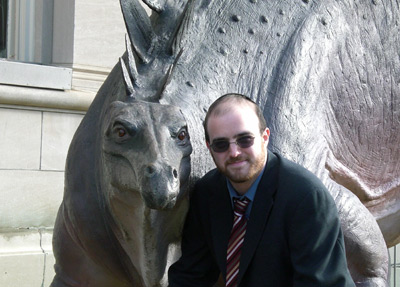"It's a Process of Rehumanization"
The Rehumanization theory of Aveilut
(according to my brother)
First, let's review the stages of mourning:
stage #0: Aninut
stage #1: Shiv‘a
stage #2: Sheloshim
stage #3: Yud-Bet Hhodesh
So, according to my brother, what's going on here is a process of rehumanization. At first, you don't exist at all — with no mirrors in the house, you can't quite see yourself. There's no mē videō, ergo sum; no 'seeing is believing' proof to your own existence. After shiva, you exist; you remove the cloths from the mirrors and can once again see yourself. You exist, but you "let yourself go" by not grooming yourself. Mourning blocks you from re-embracing social norms of proper appearance until shloshim is over. At that point, you can once again groom yourself, but you can't participate in the "upsides" of social life. It takes until the rest of the first year has passed to once again be a full member of human civilization.
(according to my brother)
First, let's review the stages of mourning:
stage #0: Aninut
Between the death and the burial, the mourners are released from all halakhic obligations aside from taking care of burial of the deceased.
stage #1: Shiv‘a
After the burial, the mourners go home and sit on low chairs, don't go to work, and among other things, cover up all mirrors in the house.
stage #2: Sheloshim
After getting up from shiva, one can go back to work, use mirrors, and sit on normal chairs, but (once again, among other restrictions) not get a haircut, trim or shave.
stage #3: Yud-Bet Hhodesh
After the first 30 days are up, some of the communal celebration restrictions are lifted, as well as the prohibition on cutting hair.
So, according to my brother, what's going on here is a process of rehumanization. At first, you don't exist at all — with no mirrors in the house, you can't quite see yourself. There's no mē videō, ergo sum; no 'seeing is believing' proof to your own existence. After shiva, you exist; you remove the cloths from the mirrors and can once again see yourself. You exist, but you "let yourself go" by not grooming yourself. Mourning blocks you from re-embracing social norms of proper appearance until shloshim is over. At that point, you can once again groom yourself, but you can't participate in the "upsides" of social life. It takes until the rest of the first year has passed to once again be a full member of human civilization.



4 Comments:
there's an article by r' soloveitchik in, i believe, 'shiurei ha-rav' where he discusses the processes of aninut and aveilut and expresses some similar ideas about aveilut being a process of return, but in a theological dimension
Interesting idea.
If you're going to put the macron in videō, you may as well be consistent and write "mē".
Adderabbi:
thanks! it sounds intersting.
Mar:
well, the internet didn't warn me about that one :-P
I was going to say the same thing that AddeRabbi said; I think, especially if you look at the Kohen Gadol and his relationship to death, avelut is showing your distance from God at times of tragedy, recognizing that it takes somewhat of an effort to re-establish your connection (which, quite appropriately, begins with other humans coming to visit and console you). I think you are right in that it is a process of reacquaintance from that to which one has become estranged, and could even be a process of rehumanization, but certainly the defintion of human that we're going to use here has to have a significant theological component to it (Adam vs. Enosh, and all that good stuff).
For some strange reason, I have not had your blog in my aggregator. I've rectified this horrible injustice and will now be reading regularly. My apologies.
Post a Comment
<< Home